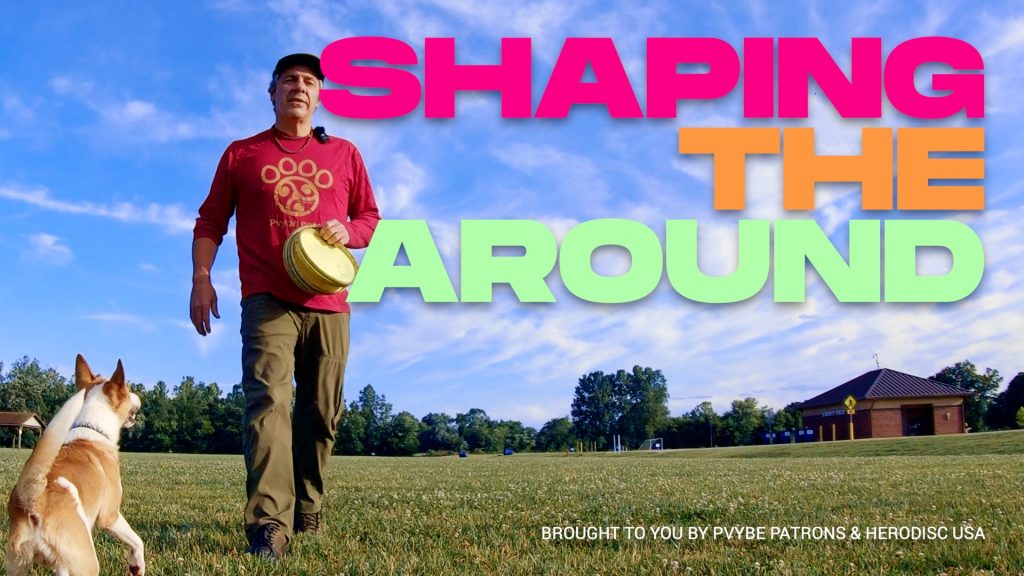
Shaping the Outrun | How to Adjust the Around
One of the things that gives handler’s fits while playing disc with their dogs is the shape and scale of the outrun on the Around behavior. Whether it is Throw N Go, freestyle or games, the way the dog leaves the handler on the around has great bearing on the game. If the outrun is too tight, then the dog rushes the handler and forces an early throw, if it is too wide the handler has to wait and compute the dog’s line before making the throw. If it’s just right, hopefully it stays there, but too much of one type of play or another can unintentionally shape and change the outrun and eventually wind up giving the team trouble.
What is an Outrun?
An outrun is a herding term that describes how dogs leave the handler to go get the sheep. The idea is that the dog runs out, laterally to one side or the other as they leave the handler towards the sheep. This lateral movement allows the dog to get outside of the sheep to engage them without splitting them up and enables a clean start working them towards the handler.
In disc, this would be the lateral component of the Around behavior. Some dogs, particularly border collies, have a substantial outrun, moving out wide on the finish of the around instead of upfield. This would be a big outrun. Other dogs have zero outrun and do the Around too tight, wrapping the handler’s legs and moving directly upfield without an outrun at all.
You Are Not Helpless
Most handlers tend to think that this outrun is a fact of dog, meaning that it’s just how my dog moves and never attempt to change the shape. This is no more true than the idea that you can’t speed up your dog’s retrieve. Of course it means you have to do something different.
You Get What You “Want”
Your dog’s current outrun in disc is more a product of how you play the game than a genetic or natural trait of your dog. Your current game, if it is working and is fun for the dog, is obviously what you want. And I know it might not be what you really want but if it is working for the dog and the team you’re outvoted and this is how the game is played.
So the first step of shaping your dog’s outrun is to figure out what you want. Personally, I want it all and the techniques outlined below will deliver a full range of outrun, on cue, allowing you to not only fix it, but to have it all.
This, That, and the Other
We can make the outrun bigger or smaller and that will assuredly be your goal, but there is more to the method than simply counteracting the undesired expression of the outrun. You want to move between the example (what you want), the non-example (what you don’t want), and a normal expression of the behavior (a regular around) if you want control, understanding, and quick success.
Normally I use a ratio of 3x the strong behavior to 1x the weak expression for learning, but in this case, I like to flip that. So you’ll use 3x the shape you are looking for to 1x the shape you want to go away, and then every once in a while throw a normal around to see what happens.
Expanding the Outrun – Around-Get Out
- Face forward (12 o clock)
- “[your Clockwise Around cue]-Get Out” (like one word)
- Turn your toe out
- SideArm/Overhand Wrist Flip to 10 o clock.
Face forward (12 o clock) and send the dog around with your around cue+”Get Out” as if it is one word. When the dog commits to going around, turn your left toe out towards 9 or 10 o clock and make a sidearm throw to 10 o clock. The idea here is for the dog to hear the verbal cue + get out and get a physical confirmation of the cue with the toe turn.
Making a sidearm throw to a dog moving clock means it’s blind, so the dog does not get to see the throw. Not seeing the throw forces the dog to commit to sliding out sideways. This will take several reps.
This can be flipped in the counter clock direction, using your counter clock cue+ “Get Out” and turning the right toe in the direction you’re throwing. Use a backhand throw (regular frisbee toss) to make it blind for the dog.
Shrinking the Outrun – Around-Here
- Face forward (12 o clock)
- “[your Clock Around cue]-Here” (like one word)
- Step to 2 o clock with the right foot
- Backhand
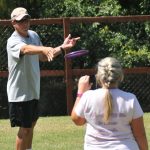 The Backhand toss is the traditional disc throw. While it might not be the easiest throw of them all, it is the easiest to throw a hundred yards, and it is the easiest... More throw
The Backhand toss is the traditional disc throw. While it might not be the easiest throw of them all, it is the easiest to throw a hundred yards, and it is the easiest... More throw
Face forward (12 o clock) and send the dog around with your clock around cue+”Here” as if it is one word. When the dog commits to going around, step forward to 2 o clock with your right foot and make a backhand throw to 2 o clock. The idea here is for the dog to hear the verbal cue + “Here” and get a physical confirmation of the cue with the step forward.
This will pull the dog in and in front of you. You’re looking for the dog to immediately look in while exiting the Go AroundAn Around, or a Go Around is the traditional disc dog set up move. The dog goes around the handler’s body in a clockwise or counter clockwise fashion allowing dog and handler to... More move.
This can be flipped in the counter clock direction, using your counter clock cue+ “Here” and stepping to 10 o clock with the left foot. Use a backhand throw (regular frisbee toss) for simplicity.
Neutral Outrun – Around
Feel free to give a normal Around cue every 10-20 reps to see how things are working and to see how the dog responds to a “normal” around cue.
Keys to Success
Work both the Get Out and Here versions of the around. 3 reps of the shape you want to improve for every 1 rep of the shape that you’re trying to reduce.
Make blind tosses to reduce the dog’s reliance on watching the release of the disc. You want to drive the dog into the shape you’re looking for.





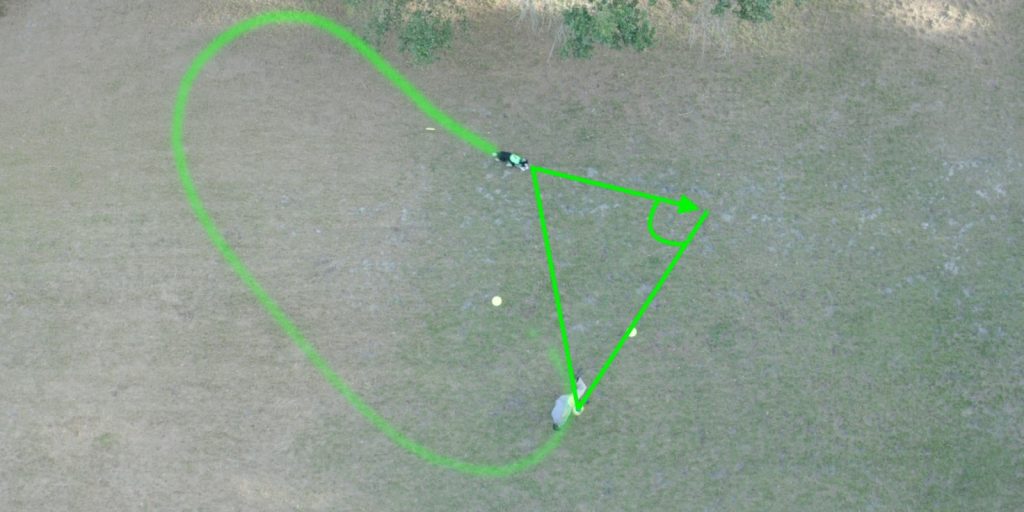
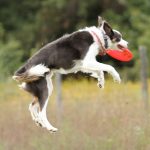
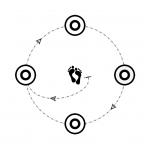


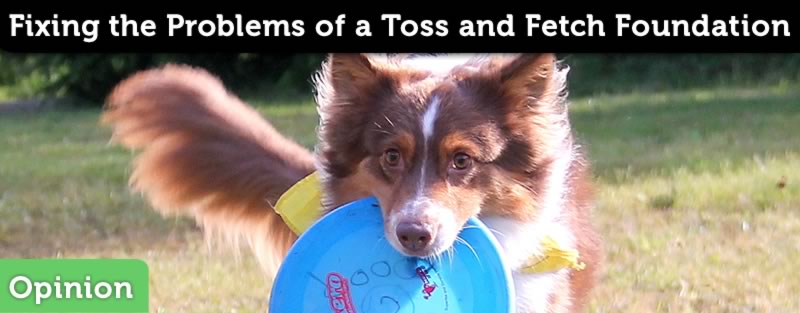
Thank you Ron for this Excellent detailed path to shape the around and I’m excited to try it with both of my Boys 💞
I did this exercise with both my guys this morning and loved it! There was some confusion from my young (“slightly” overeager Border Collie ) as we have been working with laws of resonant spin exercises from day one – but he got it and responded beautifully . It also helps me to stay in my throwing with intent and accuracy!
Nice! Sounds like you caught what I was throwing out there… Good stuff, right?
Thanks for the comment.
Peace & Happy Jamming!
GREAT stuff! Much needed and much appreciated! Thanks, Ron!